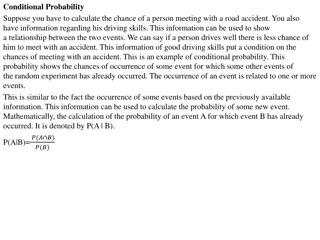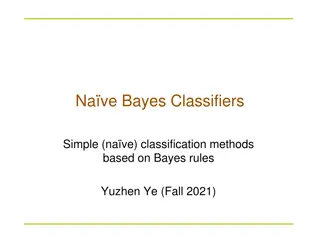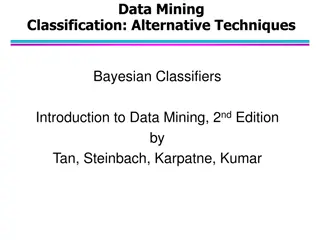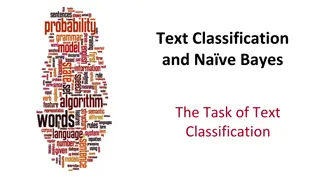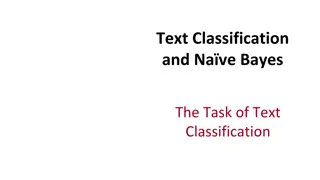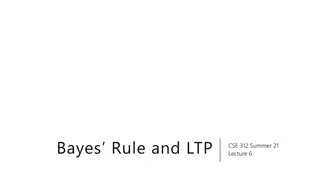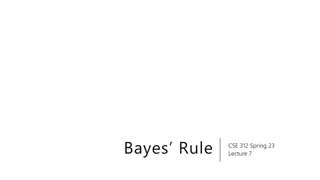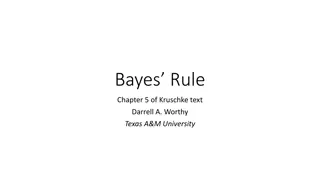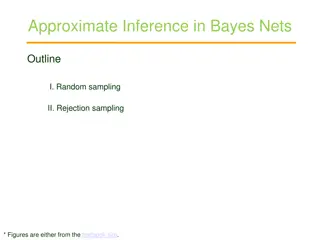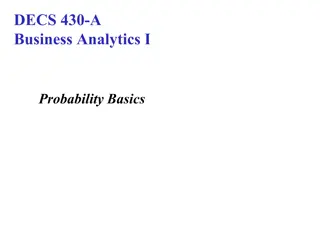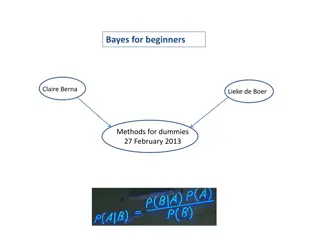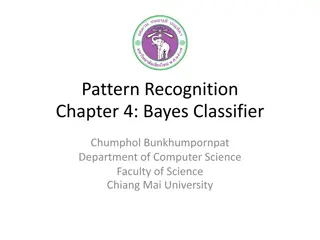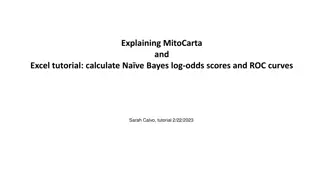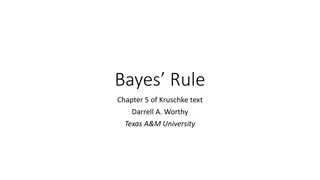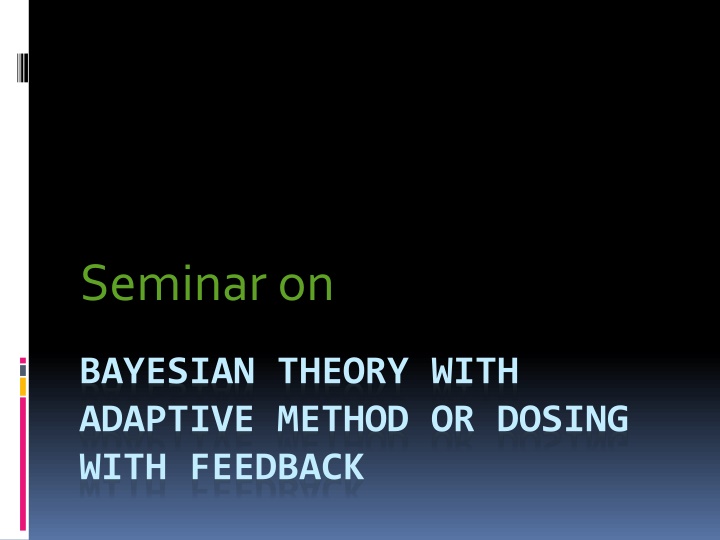
Bayesian Theory with Adaptive Dosing: A Seminar Overview
Explore the fundamentals of Bayesian theory and its applications in adaptive dosing with feedback mechanisms. Understand how Bayesian probability offers a unique perspective on probability as a measure of knowledge. Discover the origins and benefits of Bayesian statistics in various fields, including drug dosage regimen development. Dive into the concept of posterior probabilities and the integration of prior information with new data for informed decision-making. Uncover the role of Bayesian theory in improving forecast accuracy and enhancing medical diagnoses through a holistic approach to data analysis.
Download Presentation

Please find below an Image/Link to download the presentation.
The content on the website is provided AS IS for your information and personal use only. It may not be sold, licensed, or shared on other websites without obtaining consent from the author. If you encounter any issues during the download, it is possible that the publisher has removed the file from their server.
You are allowed to download the files provided on this website for personal or commercial use, subject to the condition that they are used lawfully. All files are the property of their respective owners.
The content on the website is provided AS IS for your information and personal use only. It may not be sold, licensed, or shared on other websites without obtaining consent from the author.
E N D
Presentation Transcript
Seminar on BAYESIAN THEORY WITH ADAPTIVE METHOD OR DOSING WITH FEEDBACK
Bayesian probability is one of the most popular interpretationsof the concept of probability. The Bayesian interpretation provides a standard set of procedures and formula to perform this calculation. Bayesian probability interprets the concept of probability as "a measure of a state of knowledge" in contrast to interpreting it as a frequencyor a physical property of a system.
Its name is derived from the 18th century statistician Thomas Bayes, who pioneered some of the concepts According to the objectivist view, the rules of Bayesian statistics can be justified by requirements of rationality and consistency and interpreted as an extension of logic. According to the subjectivist view, the state of knowledge measures a "personal belief".Many modern machine learning methods are based on objectivist Bayesian principles
Given some data and some hypothesis, the posterior probability that the hypothesis is true is proportional to the product of the likelihood multiplied by the prior probability. For simplicity, the "prior probability" is often abbreviated as the "prior" and the "posterior probability" as the "posterior"
Introduction to Bayesian Theory Bayesian theory was originally developed to improve forecast accuracy by combining subjective prediction with improvement from newly collected data. In the diagnosis of disease, the physician may make a preliminary diagnosis based on both sets of information. Bayesian theory provides a method to weigh the prior information (eg.physical diagnosis) and new information (e.g., results from laboratory tests) to estimate a new probability for predicting the disease.
In developing drug dosage regimen we assess the patients medication history and then use average or population pharmacokinetic parameters appropriate for the patient s condition to calculate the initial dose. After the initial dose, plasma or serum drug concentrations are obtained from the patient that provides new information to assess the adequacy of the dosage. The dosing approach of combining old information with new involves a feedback process and to some degree inherent in many dosing methods involving some parameter readjustment when new serum drug concentrations become known.
Because of inter-and intrasubject variability the pharmacokinetic parameters of an individual patient must be estimated from limited data in the presence of random error (assays ,etc)known covariates variables such as clearance , weight, and disease factor etc. Bayesian methods often employ a special weighted-least squares(WLS)approach and allow improved estimation of patient pharmacokinetic parameters when there is a lot of variation in data
Where, H is a hypothesis, and D is the data. Prob (H) =the probability of the patient s parameter within the assumed population distribution.(PRIOR Probability) Prob(D/H)=the probability of measured concentration within the population, and P(D) is the marginal probabilityof D. P(H | D) is the posterior probability: the probability that the hypothesis is true, given the data and the previous state of belief about the hypothesis.
Example 01 False positive test. True positive test.
Example 2 Relation of Therapeutic concentration of theophylline with adverse effect Example of bayesian method with alternative method to determine the parameter
Advantage : Bayesian approach is the improvement in estimating the patients pharmacokinetic parameters based on Bayesian probability versus an ordinary least-square based programe Disadvantage: Bayesian method is the subjective selection of prior probability. Therefore , it is not considered to be unbiased by many staticians for drug approval purposes
Adaptive method or dosing with feed back In dosing drugs with therapeutic ratios, an initial dose is calculated based on mean population pharmacokinetic parameters. More blood samples are drawn ph.parameter increasingly more reliable This type of approach has been referred to as adaptive oa baysian adaptive method with feedback when a spacial extended least square algorithm is used.
Many least squares and weighted least square algorithms are available for estimating pk.parameters. Advantage is the ability to input known information into the programe, so that the search for real pharmacokinetic parameter is more efficient and perhaps, more precise
BAYES ESTIMATOR When Pkparameter, p is estimated from a set of plasma grug concentration data (ci) having several potential sources of error with different variances OLS is no longer adequate. Weighted least squares equation the equation represents the least square estimation of the concentration by minimizing deviation squares and deviation of population parameters squares is called as BAYES ESTIMATOR
` Bayesian (ELS) : uses NONMEM Other available NPME2 : non parametric maximum expectation maxmization method FOEM P-PHARM

